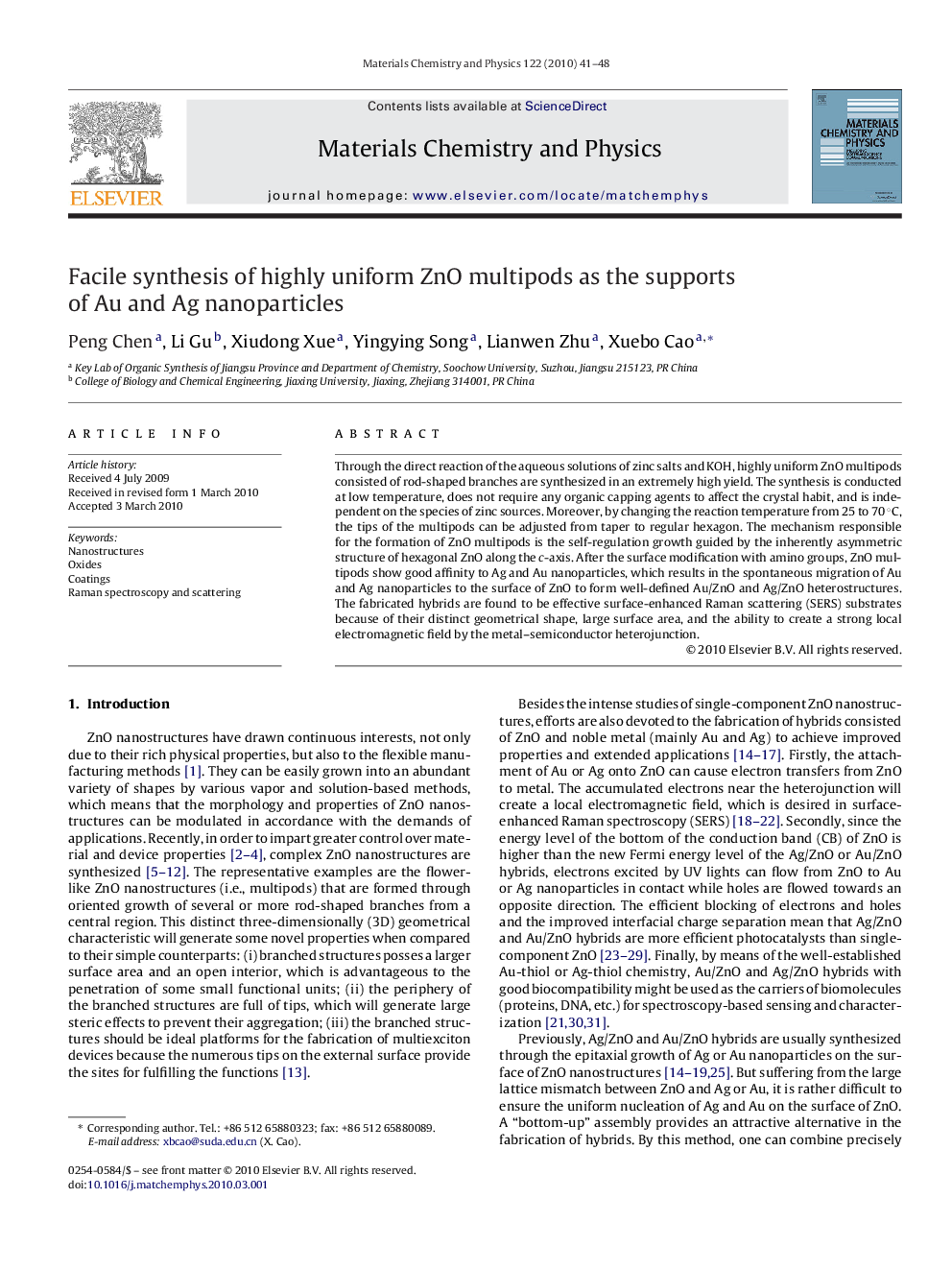| Article ID | Journal | Published Year | Pages | File Type |
|---|---|---|---|---|
| 1525326 | Materials Chemistry and Physics | 2010 | 8 Pages |
Through the direct reaction of the aqueous solutions of zinc salts and KOH, highly uniform ZnO multipods consisted of rod-shaped branches are synthesized in an extremely high yield. The synthesis is conducted at low temperature, does not require any organic capping agents to affect the crystal habit, and is independent on the species of zinc sources. Moreover, by changing the reaction temperature from 25 to 70 °C, the tips of the multipods can be adjusted from taper to regular hexagon. The mechanism responsible for the formation of ZnO multipods is the self-regulation growth guided by the inherently asymmetric structure of hexagonal ZnO along the c-axis. After the surface modification with amino groups, ZnO multipods show good affinity to Ag and Au nanoparticles, which results in the spontaneous migration of Au and Ag nanoparticles to the surface of ZnO to form well-defined Au/ZnO and Ag/ZnO heterostructures. The fabricated hybrids are found to be effective surface-enhanced Raman scattering (SERS) substrates because of their distinct geometrical shape, large surface area, and the ability to create a strong local electromagnetic field by the metal–semiconductor heterojunction.
